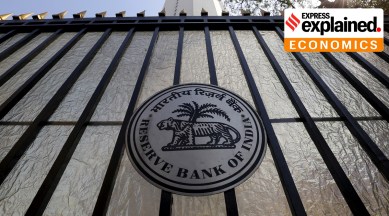RBI monetary policy: Why is the central bank likely to go for an extended pause?
Analysts expect the RBI to keep the policy repo rate unchanged at 6.5 per cent, due to the gradual easing of inflation.

The Monetary Policy Committee (MPC) of the Reserve Bank of India will begin a three-day meeting on June 6, to discuss the second bi-monthly monetary policy for fiscal 2023-24. The decision of the panel will be announced by Reserve Bank of India Governor Shaktikanta Das on June 8.
Most economists and analysts expect the RBI to keep the policy repo rate unchanged at 6.5 per cent, drawing comfort from the gradual easing of inflation. It is expected that the six-member panel will keep the policy stance as ‘withdrawal of accommodation’.
Why will RBI pause?
In the April policy, the MPC members, in a surprise move, unanimously decided to pause RBI’s rate hike cycle. The pause in repo rate – the rate at which RBI lends money to banks to meet their short-term funding needs – in April was for the first time since the RBI started its rate hike cycle in May 2022 to check inflation. RBI Governor Shaktikanta Das, however, stated that it was a pause and not a pivot, a line that he has reiterated subsequently.
Since the April policy, consumer price index-based inflation (CPI), or retail inflation, has eased further. It declined to an 18-month low of 4.7 per cent in April from 5.7 per cent in March, remaining under the RBI’s comfort zone of 2-6 per cent for two consecutive months. The RBI is mandated to keep CPI at 4 per cent with a band of +/- 2 per cent.
Also, India’s gross domestic product (GDP) expanded at 6.1 per cent January-March 2023 quarter, in turn pushing up the growth estimate for the full year 2022-23 to 7.2 per cent. With ease in inflation and strong GDP growth, the RBI is likely to maintain the status quo in the June policy, experts said.
“Trends for May suggest inflation could ease further, close to 4 per cent year-on-year, helped by base effects, as core and non-core segments soften. Consequently, average Apr-Jun 2023 inflation is expected to undershoot the RBI’s forecast by 50-60bp. A combination of softening inflation and robust recovery is likely to see the MPC lean towards a pause at this juncture,” said Radhika Rao, Executive Director and Senior Economist, DBS Group Research.
Analysts said that RBI’s decision to leave the repo rate unchanged will also factor in the possible pause by the US Federal Reserve in its meeting scheduled later this month.
“Mixed signals from the US (labour market, manufacturing activity), has raised the probability (70 per cent) of Fed entering wait and watch mode by opting for a pause in June 2023,” Bank of Baroda said in a note.
What are the chances that the RBI will change its policy stance?
Economists said the RBI is likely to remain focused on its stance of ‘withdrawal of accommodation’ as liquidity conditions have turned surplus. “We expect the stance (withdrawal of accommodation) to be maintained this month as the MPC prefer to stay on wait-and-watch mode to gauge the fallout of weather conditions on the price trend before considering a pivot to easing,” DBS Group’s Rao said.
The liquidity condition in the banking system has improved because of the deposit of Rs 2000 banknotes which were withdrawn from circulation last month, higher government spending and the RBI’s intervention in the forex market. On June 2, the net liquidity surplus in the banking system stood at Rs 2.37 lakh crore, RBI data showed.
Will GDP and inflation projections be revised?
In April policy, the RBI estimated real GDP growth for FY2024 at 6.5 per cent. It projected CPI inflation to be at 5.2 per cent for FY2024.
While the RBI is unlikely to revise its real GDP growth forecast, it could revise the inflation projection downward. “With CPI inflation tracking 50 bps (basis points) below RBI’s CPI inflation forecast of 5.1 per cent average for April-June 2023, there is scope for the central bank to revise the FY24 forecast downward to 5 per cent, from 5.2 per cent currently,” said Kaushik Das, Chief Economist, India & South Asia, Deutsche Bank.
What will happen to lending, deposit rates in case of a pause by RBI?
If RBI keeps the policy rate unchanged in the June policy, then all external benchmark lending rates (EBLR) linked to the repo rate will not rise. It will provide some relief to borrowers as their equated monthly instalments (EMIs) will not increase.
Notably, EBLRs – 81 per cent of are linked to the benchmark repo rate – now dominate the mix of outstanding floating rate loans, with the share rising to 48.3 per cent by December 2022, whilst those based on MCLR (marginal cost of fund-based lending rate) eased to 46 per cent, DBS Group said.
Banks will also not increase fixed deposit rates in case of a pause. The decision to hold deposit rates at the current levels will be driven by surplus liquidity in the banking system due to improvement in low-cost current account and savings account (CASA) balance following the deposit of Rs 2000 banknotes.
Also, lower credit demand at the beginning of the fiscal year will ease pressure on deposit rates.